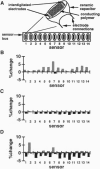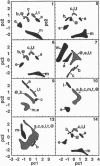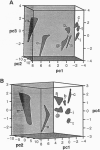Abstract
We describe a method for generating a variety of chemically diverse broadly responsive low-power vapor sensors. The chemical polymerization of pyrrole in the presence of plasticizers has yielded conducting organic polymer films whose resistivities are sensitive to the identity and concentration of various vapors in air. An array of such sensing elements produced a chemically reversible diagnostic pattern of electrical resistance changes upon exposure to different odorants. Principal component analysis has demonstrated that such sensors can identify and quantify different airborne organic solvents and can yield information on the components of gas mixtures.
Full text
PDF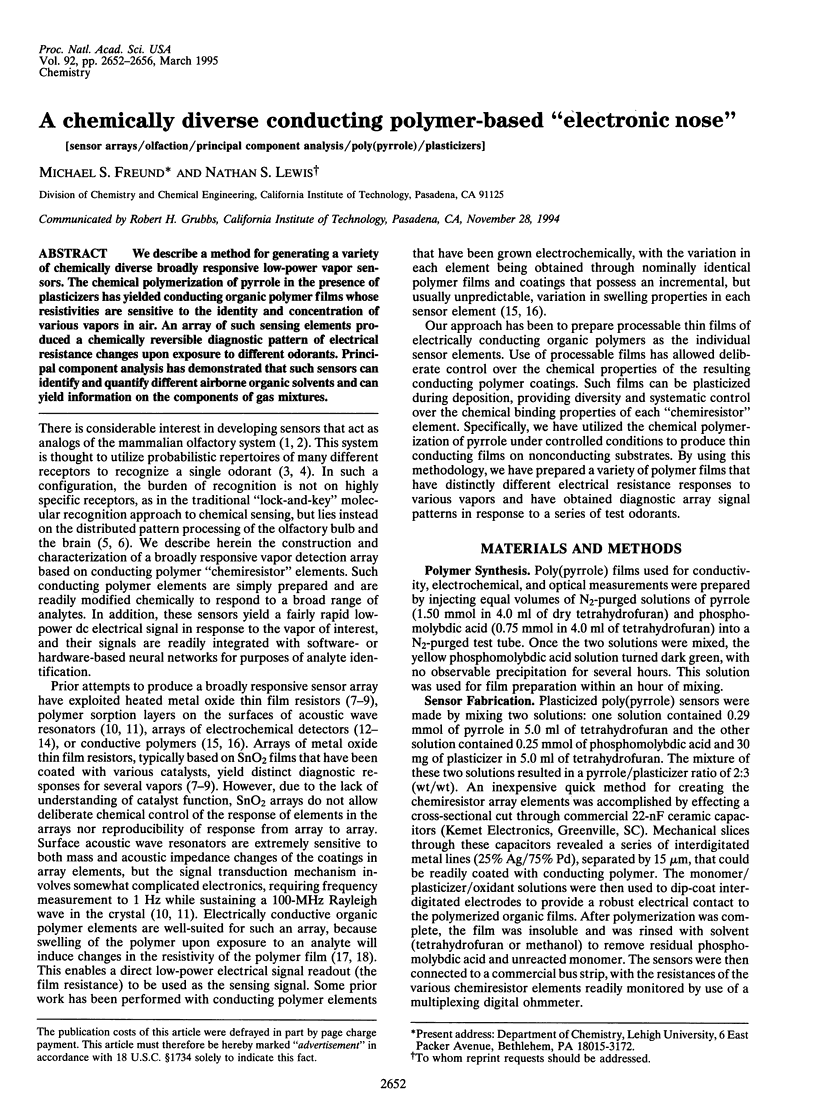
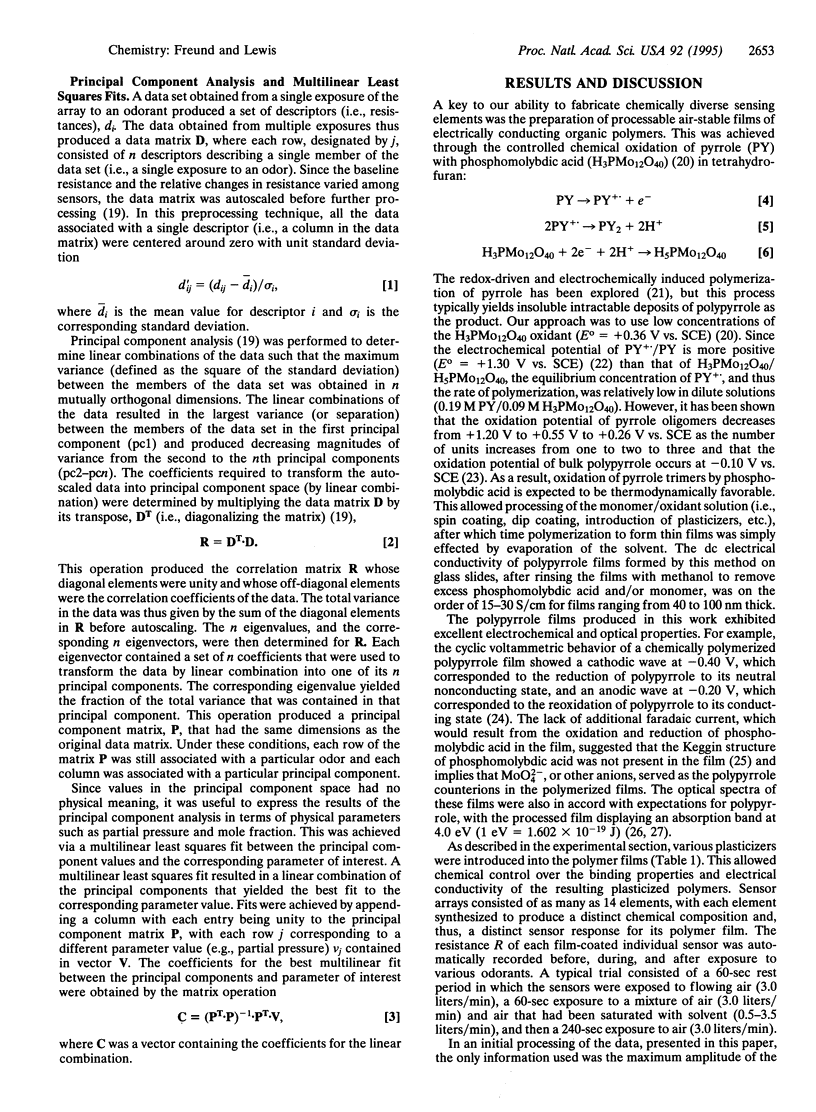
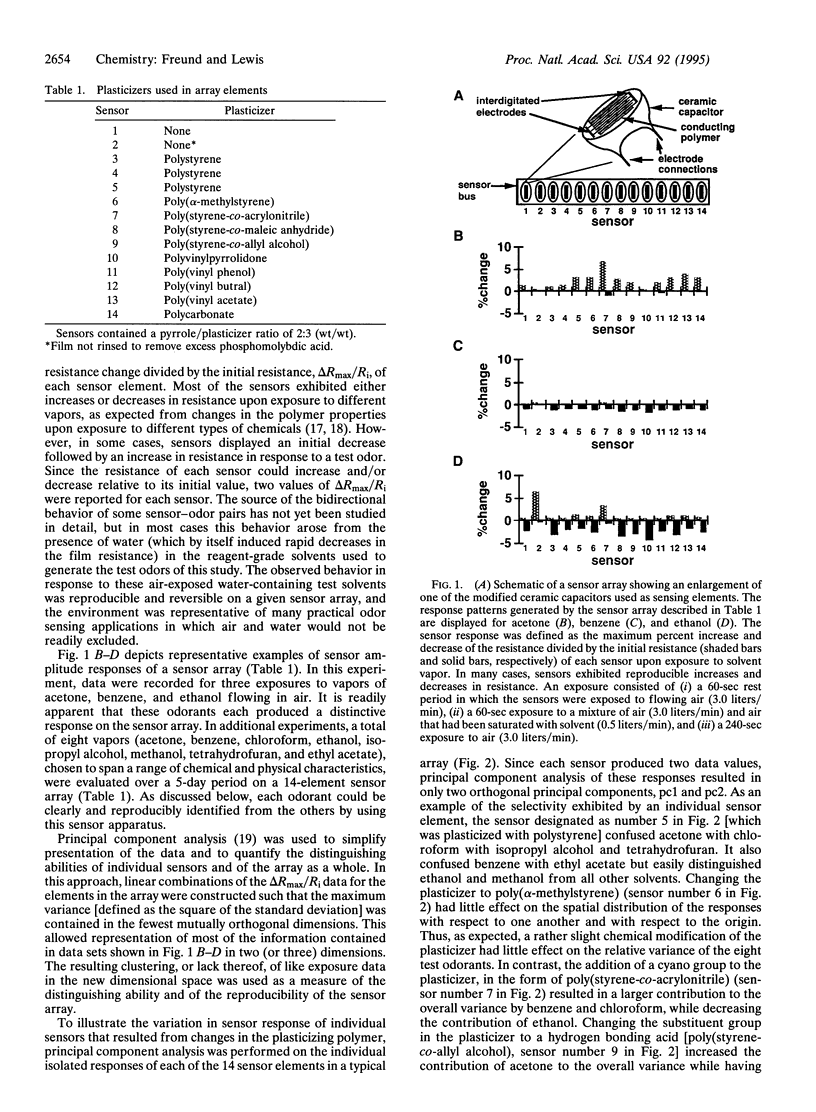
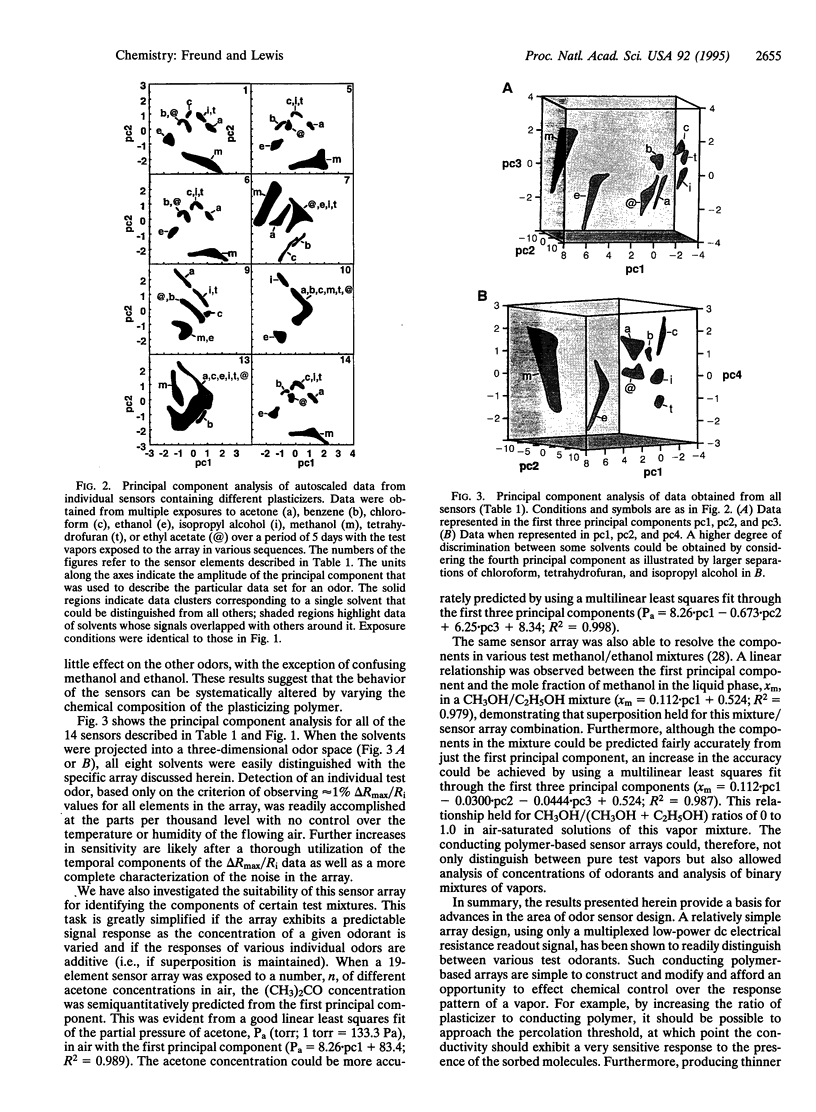
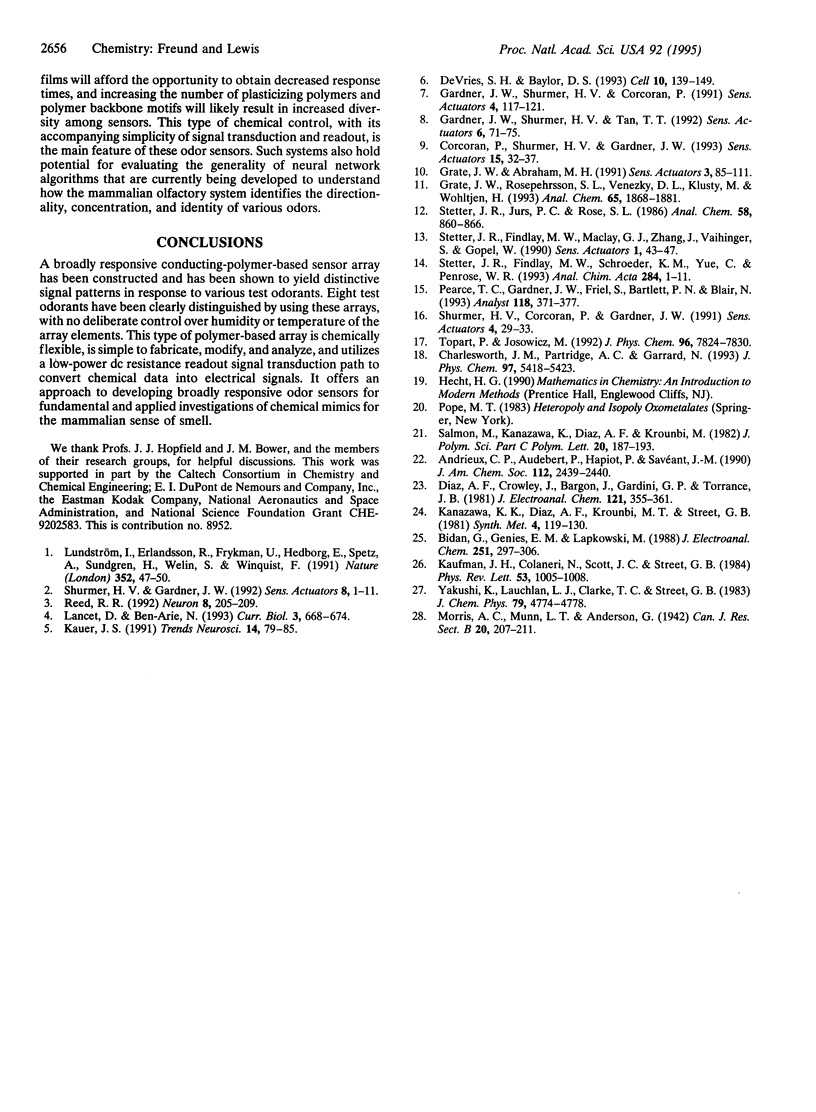
Images in this article
Selected References
These references are in PubMed. This may not be the complete list of references from this article.
- DeVries S. H., Baylor D. A. Synaptic circuitry of the retina and olfactory bulb. Cell. 1993 Jan;72 (Suppl):139–149. doi: 10.1016/s0092-8674(05)80033-9. [DOI] [PubMed] [Google Scholar]
- Kauer J. S. Contributions of topography and parallel processing to odor coding in the vertebrate olfactory pathway. Trends Neurosci. 1991 Feb;14(2):79–85. doi: 10.1016/0166-2236(91)90025-p. [DOI] [PubMed] [Google Scholar]
- Lancet D., Ben-Arie N. Olfactory receptors. Curr Biol. 1993 Oct 1;3(10):668–674. doi: 10.1016/0960-9822(93)90064-u. [DOI] [PubMed] [Google Scholar]
- Reed R. R. Signaling pathways in odorant detection. Neuron. 1992 Feb;8(2):205–209. doi: 10.1016/0896-6273(92)90287-n. [DOI] [PubMed] [Google Scholar]



